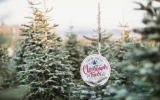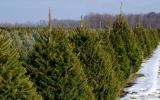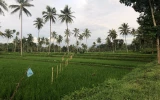How Many Acres Do You Need for a Christmas Tree Farm?
A Christmas tree farm can be a profitable venture if you have enough land to plant your trees. In the U.S. alone, at least 25–30 million Christmas trees are sold each year as the holiday season approaches. If you're on your way to starting your Christmas tree farm, here's how many acres you'll need to get it started.
A small Christmas tree farm can be established on as little as 1–2 acres of land, while larger operations may require 10 acres or more. On average, the required size of a Christmas tree farm must be around 10–20 acres to have a well-spaced farm that can hold 1,500 trees per acre.
The number of acres needed for a Christmas tree farm depends on several factors, including the type of tree being grown, the planting density, and the desired yield. Let's take a deeper look at how these factors affect the acreage required to establish a Christmas tree farm.
Understanding how many acres you need is a key factor in successfully starting a profitable Christmas tree farm from scratch.
Summary
- You can begin your Christmas tree farm with just 1–2 acres of land if you only aim to sell the trees locally or just grow them for yourself.
- If you aim for commercial production of Christmas trees, you will need 10–100 or more acres of land. However, you will also need more initial capital investment and additional labor.
- The acreage requirement for a Christmas tree farm is affected by factors such as the type of trees being grown, planting density and spacing, and your yield expectations.
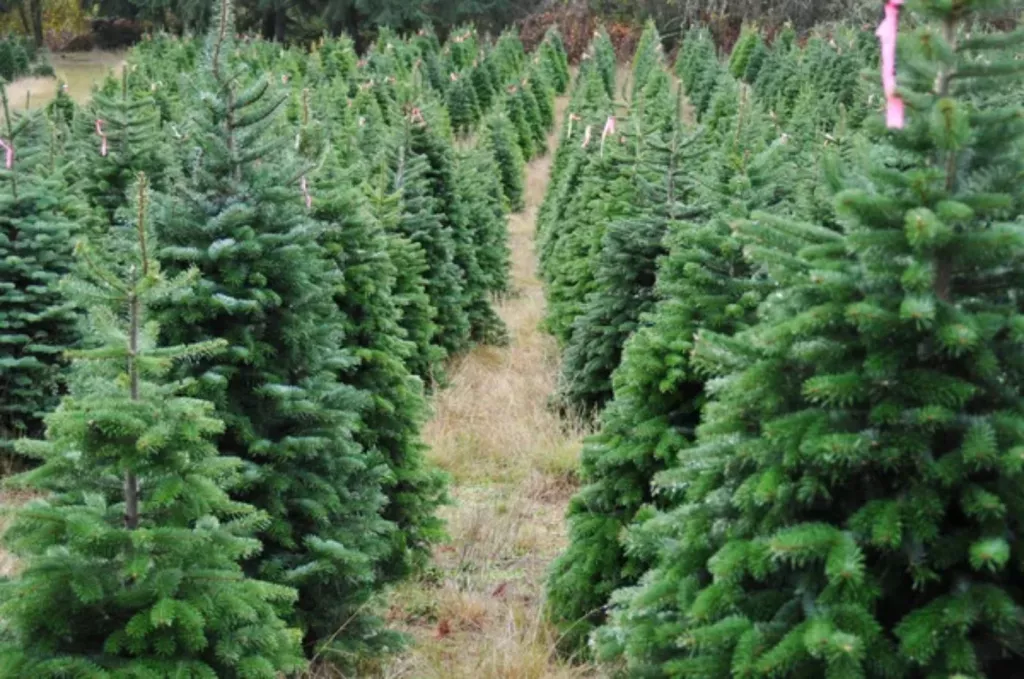
Start a Christmas Tree Farm with 1–2 Acres
A small Christmas tree farm can be established on as little as 1–2 acres of land, while larger operations may require 10 acres or more. On average, the size of a well-spaced Christmas tree farm which can hold 1, 500 trees per acre must be at least 10 - 20 acres.
Below is a table comparing the acreage requirements depending on the size of farm you'll want to establish and their specific purposes:
| Size of Christmas Tree Farm | Acreage | Use/Purpose |
|---|---|---|
| Small | 1–5 acres | Suitable for a part-time or hobbyist grower who wants to sell trees locally |
| Medium | 5–25 acres | Suitable for a full-time grower who wants to sell trees regionally or nationally |
| Large | 25–100 acres or more | Suitable for a commercial grower who wants to sell trees on a national or international scale |
If you only want to earn extra income from growing and selling Christmas trees or just want to grow them as a hobby, a small farm with 1–5 acres of land will suffice.
If you want to become a full-time grower and sell regionally or throughout your country, a medium-sized Christmas tree farm, which typically ranges from 5 to 25 acres, will be suitable for you.
If you have plans to establish a wide-scale commercial Christmas tree farm that can cater to national or international market demand, you will need 25–100 acres of land or more.
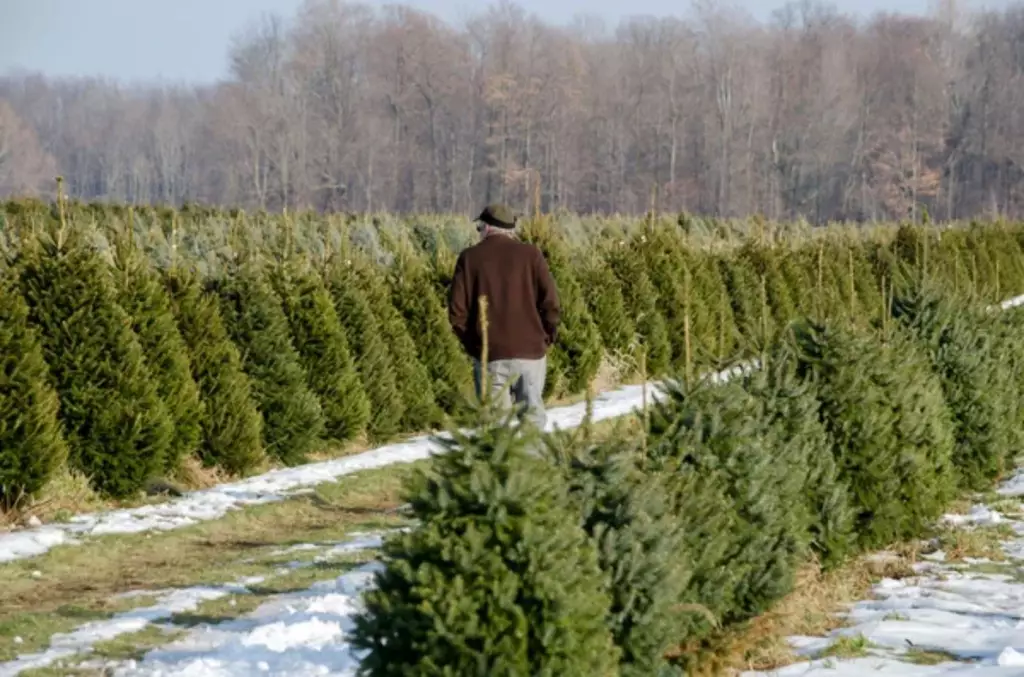
Since the initial investment cost of starting this type of tree farm depends on the size of the land, perhaps you must also take into account your resources and finances before deciding how much acreage you'll start with.
At the same time, you may want to consider the type of soil on your land. The quality of the land can be a deciding factor in how big your farm can be.
You might have 5–10 acres of land suitable for a medium-sized farm, but this can be pointless if the type of soil is not sandy, loamy, or well-draining. The required soil type for Christmas trees to thrive should be loamy and well-draining, such as old pastures or abandoned agricultural land.
Factors that Affect Acreage Requirements
The number of acres needed for a Christmas tree farm depends on several factors, including the type of tree being grown, the planting density, and the desired yield.
The species of trees affects the size of your farm
You may want to be careful when choosing the right species of Christmas tree for your farm, as it will define how big your farm can be. Slow-growing trees like Fraser firs may require more acreage to achieve a decent yield compared to faster-growing trees like white pines.
Your choice of tree species may also depend on market demand and the grower's target audience. If you intend to sell trees locally, you may choose a species that is popular in your area, but if you are targeting a national or international market, choosing species that are in high demand across different regions will be suitable.
Below is a table showing the most common Christmas tree choices, the country where they originate from, and in which markets they have the biggest demand.
| Tree Species | Native Country | Market Demand |
|---|---|---|
| Fraser Fir | United States | National/International |
| Balsam Fir | Canada | National/International |
| Douglas Fir | Western United States | National/International |
| Noble Fir | Western United States | National/International |
| Colorado Blue Spruce | United States | Local/National |
| White Spruce | Canada | Local/National/International |
| White Pine | Eastern United States | Local/National |
| Scotch Pine | Europe | National/International |
| Virginia Pine | Eastern United States | Local/National |
| Eastern Red Cedar | Eastern United States | Local/National |
Another factor to consider when choosing the right tree species is the climate and soil conditions of the farm location. Certain tree species may be better suited to specific soil types or climate conditions. Scotch pines, for example, can grow on a variety of soil types but grows particularly well on well-drained sandy loam soils.
Planting density and spacing can affect acreage size
The planting density refers to the number of trees planted per acre, while the spacing refers to the distance between each tree. These two factors can impact the number of trees that can be grown on a given acreage, as well as the yield and quality of the trees.
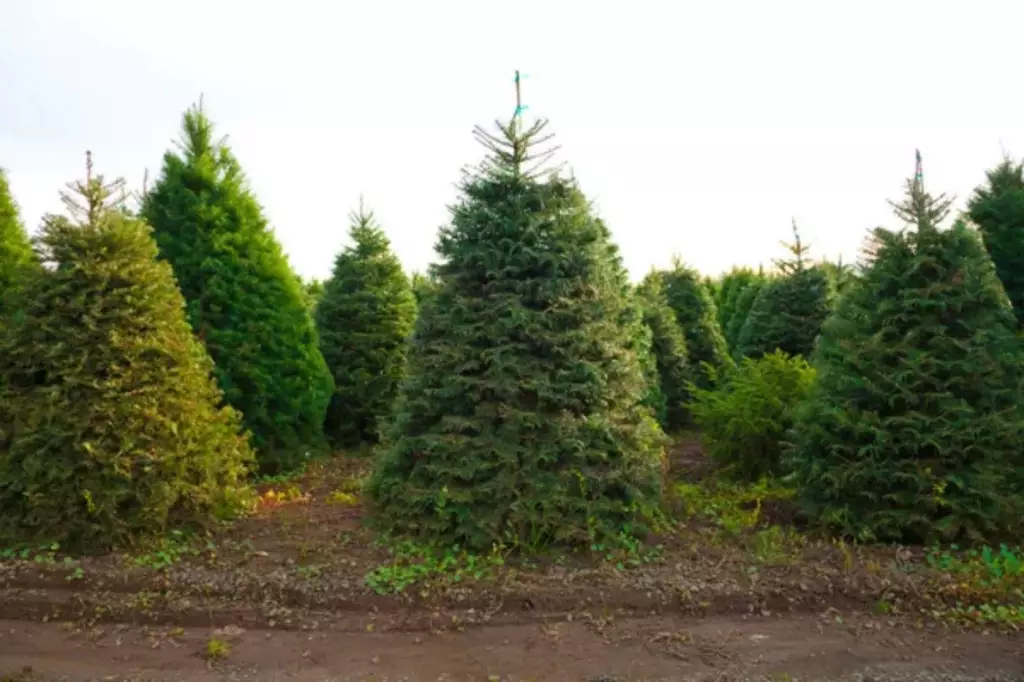
For slow-growing trees like Fraser firs, the typical planting density required is 800–1200 trees per acre, while for faster-growing trees like white pines, you could plant them at a density of 600 – 800 trees per acre..
The spacing between each tree can also vary depending on the species, with some trees requiring wider spacing to accommodate their larger size or root system. But in general, most growers plant the trees within rows 5 to 8 feet apart.
Here’s a table showing the different planting densities for each species, as well as their required spacing:
| Tree Species | Planting Density | Required Spacing |
|---|---|---|
| Fraser Fir | 800–1200 trees per acre | 6–8 feet |
| Balsam Fir | 800–1200 trees per acre | 6–8 feet |
| Douglas Fir | 1000–1500 trees per acre | 6–8 feet |
| Noble Fir | 800–1200 trees per acre | 6–8 feet |
| Colorado Blue | Spruce 600–800 trees per acre | 6–8 feet |
| White Spruce | 800–1200 trees per acre | 6–8 feet |
| White Pine | 600–800 trees per acre | 5–6 feet |
| Scotch Pine | 1500–2000 trees per acre | 5–6 feet |
| Virginia Pine | 1500–2000 trees per acre | 5–6 feet |
| Eastern Red Cedar | 1500–2000 trees per acre | 5–6 feet |
Remember that trees that are planted too closely together may compete for resources like sunlight, water, and nutrients, which can lead to stunted growth, disease, or pest problems. They will also have a crowded or cluttered appearance.
On the other hand, trees that are planted too far apart may not fully utilize the available space and may have a sparse or thin appearance. Either way, both can affect the quality of the trees and their profitability.
Determining the minimum and ideal acreage needed for a Christmas tree farm involves considering the average profit that can be earned per acre of trees planted.
Yield expectations can impact the acreage requirement
The expected yield refers to the number of trees that can be harvested per acre. If you have a high yield expectation, you may need to plant more trees per acre to achieve your desired harvest; therefore, you will need more land space.
This can also impact the profitability of the Christmas tree farm since a high yield will equate to more tree sales, therefore, generating more revenue. However, this could also incur higher costs for planting, maintenance, and harvesting.
